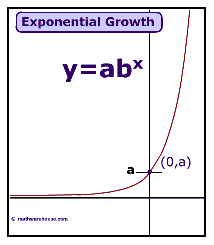Denial and Risk
 Courtesy of Charles Hugh Smith’s Of Two Minds
Courtesy of Charles Hugh Smith’s Of Two Minds
You may have forgotten all about the LIBOR rate. This London-based interbank lending rate was in the news daily during 2008’s global financial meltdown, for it was widely taken as an accurate measure of risk appetite and perception. As fears of a global meltdown rose, the LIBOR rate skyrocketed.
Less than a year later (the rate topped October 10, 2008, at 4.81875%), Libor Rate Falls to Record Low (WSJ.com).
The rate is now 0.22813%, the lowest on record since the British Bankers’ Association launched the LIBOR back in 1986.
In other words, the risks of a global financial disruption are now perceived as near-zero. The reason is rather obvious: governments around the world effectively "backstopped" all losses with their own money–either drawn from reserves, borrowed or printed.
This is significant for a number of reasons. Some lenders use the LIBOR rate in their formula for adjusting ARMs–adjustable rate mortgages. A low LIBOR rate and low interest rates translate into dropping rates for ARM holders. That’s good news for borrowers facing re-sets.
But is the super-low LIBOR rate a reflection of global financial risk dropping to zero, or is it a misplaced confidence in government’s ability to manage all systemic risk by guaranteeing that "no large banking institution will lose money risked anywhere in any market because we will transfer all that risk to the government and its taxpayers"?
These are two quite different propositions.
In the first case, the market is betting that the global financial markets are entirely, systemically healed–in fact, the risk of anything untoward happening are the lowest since 1986.
In the second case, the markets "know" the risk is still high, but they get to play like there is no risk because governments will "backstop" their bets–they literally cannot lose because the government will step in and buy the soured loans and bets or enable bogus "mark to fantasy" accounting which effectively masks the bad bets.
Denial of risk is not the same as low risk.
 The fundamental denial is that government (be it the U.S., U.K., P.R.C. (Chinese) or any other government) can borrow or print essentially unlimited funds to backstop private bets and fund government deficits with no consequences.
The fundamental denial is that government (be it the U.S., U.K., P.R.C. (Chinese) or any other government) can borrow or print essentially unlimited funds to backstop private bets and fund government deficits with no consequences.
There will be consequences–cause and effect have not been repealed by Bernanke and Geithner.
Denial will not resolve the imbalances.
Correspondent Bruce C. submitted this report on the CBO (Congressional Budget Office) estimates for future Federal deficits. the CBO estimates are riddled with absurd assumptions which boil down to either 1) propaganda or 2) institutional denial or perhaps some of both.
CBO 2009 Budget Update. See Table 1. The CBO projects an avg. annual growth of federal outlays through ’14 of just 1.4%, with revenues growing at 9-10%!! So much for the CBO’s reputation for political independence.
Also, cumulative deficits will grow by $6T from ’09 to ’14 ($7.1T by ’19), but debt held by the public/GDP will only reach 61-67%!!
Still, even with what appears to be rather rosy projections by the CBO, projected avg. nominal GDP growth after the net effects of deficit spending from ’09 to ’14 will be -3.2%/yr.
More importantly, nominal GDP growth net of deficit spending over the next decade is projected by the CBO to be -1.25%/yr., with net growth from ’14 to ’19 of less than 1%/yr.
CBO.gov–Monthly Budget Review August 2009
The federal budget deficit for the first 10 months of fiscal year 2009 reached $1.3 trillion, CBO estimates, close to $880 billion greater than the deficit recorded through July 2008. Outlays rose by almost $530 billion (or 21 percent) and revenues fell by more than $350 billion (or 17 percent) compared with the amounts recorded during the same period last year.That net surpluses from social insurance receipts are already disappearing, and the Postal Service budget is being squeezed, the off-budget offsets are likely to be much smaller or even deficits, implying that federal deficits will be larger than the CBO currently expects.
This forecast is a Japan-like scenario but with an avg. ~1% GDP and PCE price changes, rather than the persistent deflation of ~1%+ in Japan since ’98.
Bernanke and the apologists for Fed and gov’t intervention to date claim that they saved the world from another Great Depression; yet (1) they previously claimed that the potential for a Great Depression was nil; and (2) once the risk of the Great Depression II had emerged, actions taken by Bernanke and the boys over the course of 3-4 months vanquished the potential forever hereafter.
But what they don’t tell us is that the most probable scenario was not Great Depression II but was always a Japan-like demographics-induced, debt-deflationary slow-motion depression or what might euphemistically be referred to as "sustainable no-growth with no inflation" or "manageable or predictable no-growth with price stability".
In other than a Bizarro-like world, the implications of the data in the latest CBO forecast should have caused the stock market to crash owing to the obvious inference that the private sector of the US economy presents little or no growth potential for corporate revenue and earnings, shareholder equity, P/Es, book value, employment, wages, or investment for 5-10 yrs.
Surreal.
Thank you, Bruce. Surreal, indeed. GDP is set to shrink yet tax revenues are expected to leap. Hmm.
The obvious hope on the part of The Powers That Be is that pretending everything will be OK will eventually lead to everything actually being OK. This is substituting fantasy for reality and denial for realistic assessment of systemic risk.
Denial seems to be the American public’s preferred state. In all the rantings and ravings and self-righteousness boiling away in the so-called "healthcare debate," I have yet to see even one serious MSM pundit or politico voice the obvious: Medicare is unsustainable, and so why are we even talking about any new program or spending? The health care elephant in the room: Medicare (Daily Finance)
Even quintupling the Medicare tax from 2.9% to 15% would only give us a brief respite before costs overtook this stupendous new revenue stream. Here is a chart of Medicare expenses:

OK, so this is a slight exaggeration, but when a spending program grows at triple the rate of the underlying economy and demographic trends are set to double the number of recipients even as this same population exits their peak earning/taxpaying years, then you will get a close-to-exponential rise in costs.
If you don’t dig through the dross yourself, then you will never happen upon this reality. It is safely stashed behind bogus estimates and flimflam, lest the apple cart of complacent denial be upset.
Risk has not fallen to zero–it remains high, and the efforts to mask it are perversely ramping it ever higher. Denial is a wonderful survival strategy until suddenly it isn’t. When the entire government intervention/borrowing/printing mechanism implodes, the public will be shocked anew because they’d been promised and assured that "everything’s been fixed, so party like it’s 1999 or 2005."
If you want more troubling/revolutionary/annoying analysis, please read Free eBook now available: HTML version: Survival+: Structuring Prosperity for Yourself and the Nation (PDF version (111 pages): Survival+)


